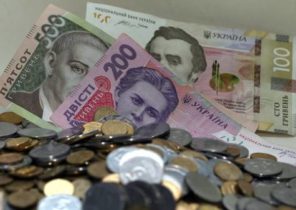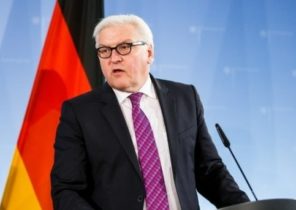President Vladimir Putin asked the officials to abandon the idea of implementation of the programme of hedging price risks for oil and gas revenues. On the background of the extremely low price of crude oil insurance looks attractive, but for various practical reasons, it is unlikely to move forward. Instead, Moscow would be advisable to invest in another form of insurance against losses in preparing its fossil fuel industry and the whole economy with a volume of $ 1.7 trillion to the future, which will be more widely used environmentally friendly technologies.
Hedging oil and gas revenues (typically put options, or contracts that allow you to sell oil futures at a predetermined price, thus providing insurance against falling prices) for mining companies tempting. But it is rarely used, due to the hefty cost and the related risk of excessive pay substantial insurance premiums (you can ask the airline). A rare exception is Mexico, which implemented the so-called “program khedzhirovaniya of Hacienda”, is the largest market for oil on wall Street. From 2001 to 2017, the country paid 11.7 billion in fees but received 14.1 billion profit. Why should not Russia follow the example of Mexico?
Despite the low cost of production, Moscow is seriously affected by what happened this year the fall in oil prices, when the failure of an agreement between major exporters coincided with the reduction in oil demand due to the pandemic. This is a crisis, the recurrence of which Putin can not allow. Given the alarming prospect of falling prices in the future (due to growth in demand and rapid recovery of demand, according to my colleague Julian Lee), it is not surprising that his team is trying to come to decision, which was seen before, but was rejected.
Unfortunately, the Russian program is the hedge still looks more attractive in theory than in practice.
Let’s start with the fact that Moscow already has serious protection. Russia postpones excess oil and gas revenues in a sovereign wealth Fund, when prices are above about $ 40 per barrel, and the government can use these funds when prices fall below that mark. It helped Russia to create the fourth-largest foreign-exchange reserves. Russia also has a shock absorber in the form of a floating currency, which generally is cheaper on the background of falling oil prices, which is beneficial to exporters.
Therefore, it is difficult not to agree with the head of the Central Bank Elvira Nabiullina, who said that it is hardly necessary to use the Fund to Finance additional insurance, especially if costs will increase (and it probably will happen) when will enter the market as the second largest oil exporter in the world and will increase demand for these hedging services. Mexico has already said that fluctuations in the market increase the cost of its annual insurance coverage.
According to the calculations of Putin’s adviser Maxim Oreshkin, with strike prices similar to Mexican in 2019 and 2020, Russia would have spent on insurance $ 3.6 billion in 2019 and the $ 4.3 billion in 2020. However, only in the first half of 2020, the replenishment of the Fund for the account of the hedge amounted to almost $ 20 billion. However, in an industry where the landscape is changing quickly, past performance is no guarantee of future results, particularly if the price of this insurance will increase dramatically. It is also important that at least a portion of the profits of Mexico was in the form of lower borrowing costs because hedging smooths the budgetary impact of falling oil prices — which would not be equally appropriate for Russia, which has no such debts.
Even if Russia wanted to repeat the Mexican gambit, it is unclear whether she would be able to do it. This is partly due to scale: if in may, Mexico was producing 1.7 million barrels per day, Russia is approximately 9.4 million. Even if Russia is to hedge only a portion of SOCAR oil to the market, this number will still be significant.
More important is the question about the risk of the counterparties. For international banks, trading firms and manufacturers, located on the other side of this derivatives transaction, the consequences for the rest of their trading operations will be very serious, and the prospect to get lost in the sanctions imposed by the United States against Russia, is unattractive.
With this in mind, Moscow is doing the right thing, thinking about their future in a world where hydrocarbon reserves are being depleted, and markets become increasingly unstable. But four billion dollars or more that Russia paid for the hedge, will bring more income if they spend elsewhere.
In an ideal world those funds could go to diversify the economy, which remains too dependent on hydrocarbon exports, by supporting innovative small businesses adversely affected by the pandemic, as well as science, education and tourism. But, as noted by Evgenia Sleptsova from the Oxford school of Economics, Putin’s Russia, first of all, we need stability, even if it means drastic measures. Of paramount importance to maintain control.
More realistic — and appropriate — approach could be the allocation of this amount on the development of fossil fuels. But not in order to protect future income “Rosneft” and other companies using derivatives, but in order to create the conditions in which its technology investments of the Russian oil and gas giants have become a little more “green”. The money could be spent on reducing methane leaks and flaring of associated gas, to make greater use of renewable energy sources for the production of oil and gas, or even the improvement of technologies for the capture and storage of carbon.
State mining companies do not face the same problems of strict requirements in the field of ecology, as companies such as “Royal Dutch shell” (Royal Dutch Shell), but the biggest buyers of Russian oil and gas are increasingly concerned about the carbon intensity of their purchases, as it did with the gas in a historic rescue plan for Europe. The approach to these goals would be more reliable protection against the unpredictable future.







